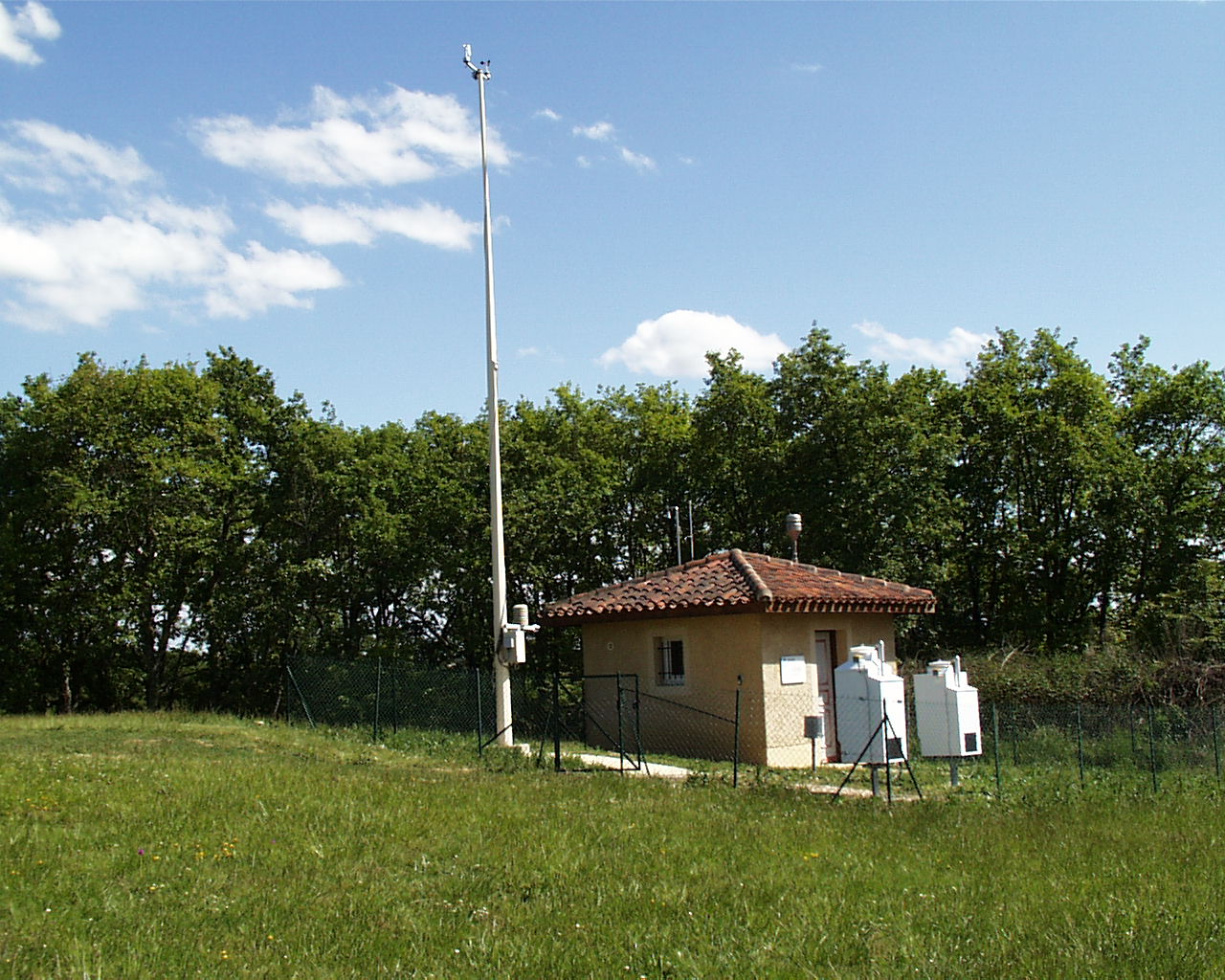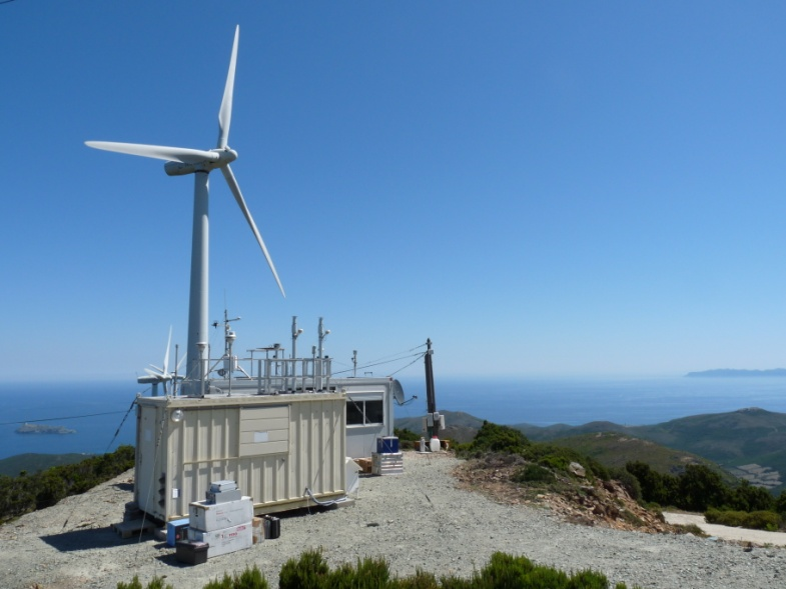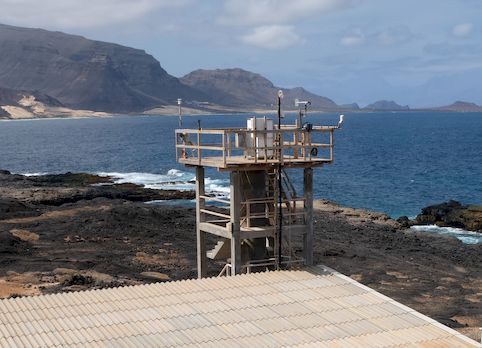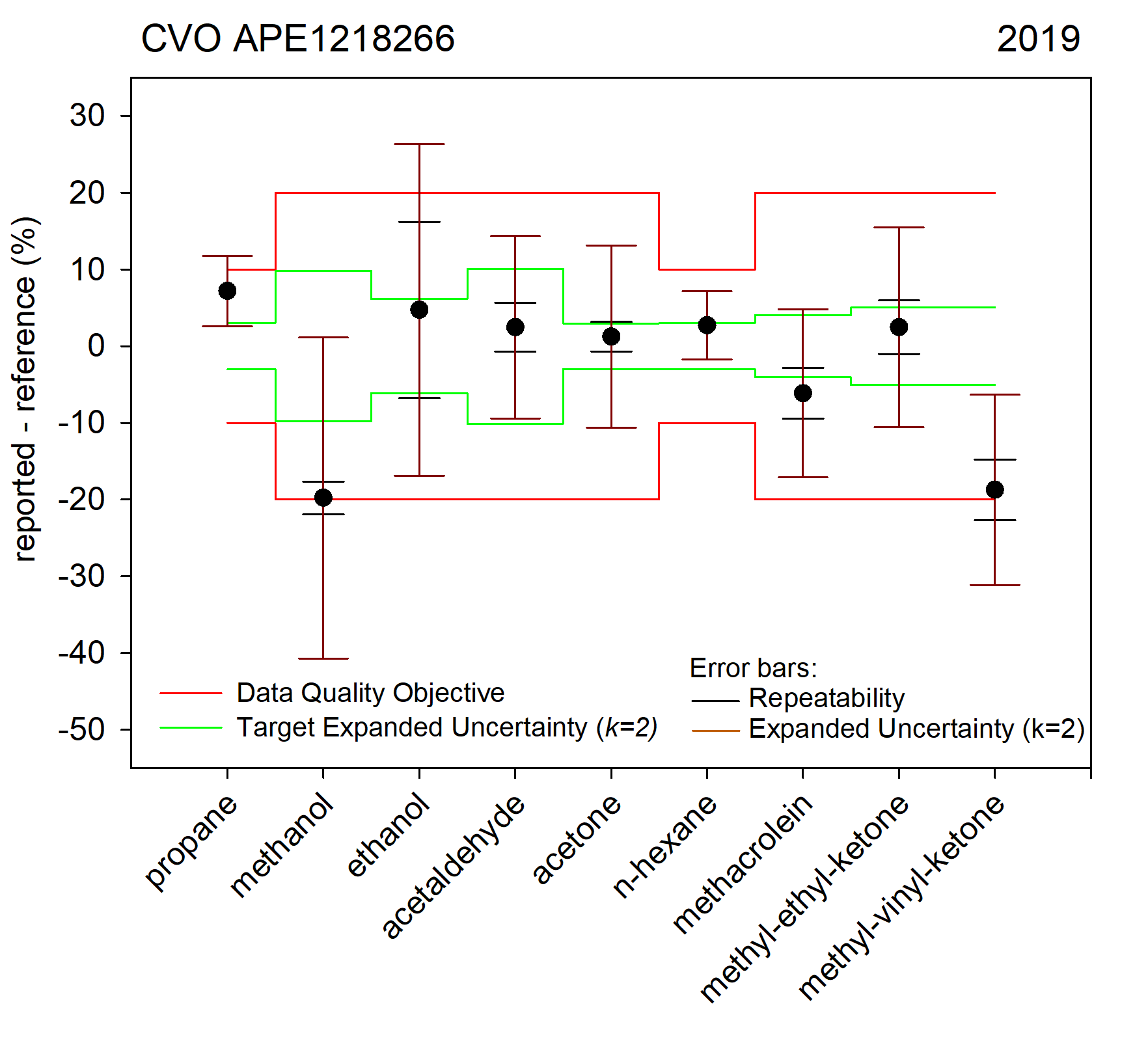Welcome to the blog of the project MetClimVOC!
November 2020
Atmospheric trace gases: VOCs, impact climate change
Have you ever wondered about the scents you smell while walking in the woods? Or when you are stuck in a traffic jam? Or when you are painting your house? Well, if you are still wondering, let us introduce you the Volatile Organic Compound (VOC) families!
# What are VOCs?
Volatile organic compounds (VOCs) are organic chemical compounds of 15 or less carbon atoms that have a high vapour pressure (> 10 hPa) at ambient temperature (20 °C). There are thousands of VOC gas species in the atmosphere (Goldstein and Galbally, 2006), mostly present at trace levels from pmol/mol to nmol/mol. For those that are not familiar with units, amount-of-substance fraction or amount fraction, is the way to express the composition of gas mixtures and therefore the composition of the atmosphere using the International System of Units (SI).
VOCs originate from natural and anthropogenic sources. Vegetation is the main natural source emitting VOCs, such as isoprene and terpenes. You can smell terpenes, such as pinene, while walking in the woods. The VOC emitted from human activities are typically aliphatic and aromatic hydrocarbons, oxygenated and halogenated compounds originated from vehicle emissions, solvents, landfills, industrial facilities and from exploitation of fossil fuels. Another important source of VOCs in the atmosphere − both natural and anthropogenic − is biomass burning.
Many VOCs are very reactive, being present in the atmosphere from minutes to days.
# Why do we care about them?
The VOC composition in air affects air quality, especially in urban areas. Some VOCs are hazardous species, such as benzene, which is a recognized carcinogenic even at low amount fraction levels. Many VOCs are therefore regulated, to mitigate the impact they have on environment and on our health.
Some VOCs are not directly air pollutants, but they are key players, being very reactive, in the formation of ground-level ozone, of secondary organic aerosols and in other atmospheric chemical processes leading to climate change (Atkinson and Arey, 2003).
Finally, halogenated VOCs such as methyl chloroform, banned by the Montreal Protocol, contribute to the stratospheric ozone depletion. Moreover, short-lived F-gases (new generation refrigerants), are potent greenhouse gases.
# Who is measuring VOCs in atmosphere?
To monitor the VOC distribution, their temporal variation and correlation with other species and therefore to understand better the physics and chemistry of the atmosphere, a number of priority VOCs are measured regularly worldwide. Several atmospheric monitoring networks (e.g. WMO-GAW, ACTRIS, AGAGE, EMEP ) include VOCs as part of their measurement strategy.
Measuring stations monitoring VOC background levels are located in remote places, such as the EMEP Peyrusse Vieille in France and the GAW station at Cape Verde.



VOC monitoring stations (from top to bottom): EMEP Peyrusse Vieille (FR), Cape Corsica, Ersa (FR) and Cape Verde
# VOC priority list
The World Meteorological Organization (WMO) – Global Atmosphere Watch Programme (GAW) Report No. 171 (2006) , formed the basis of the GAW strategy of supporting Global Long-Term Measurements of VOCs. This report included a list of VOCs to be monitored as key indicators of specific natural or anthropogenic sources.
This list, which is evaluated regularly by the WMO-GAW, and the feedbacks received from the MetClimVOC Stakeholder Committee have led to the selection of a VOC priority list for the MetClimVOC project (Deliverable 1 MetClimVOC). The VOCs under investigation are covering three categories: oxygenated-VOC, terpenes and halogenated-VOCs.
| Amount fraction range | Metrological requirements | ||||
|---|---|---|---|---|---|
| Compound | CAS | min. (nmol/mol) |
max. (nmol/mol) |
uncertainty (%) |
stability* (months) |
| Ethanol | 64-17-5 | 1 | 1000 | ≤ 5 | ≥ 24 |
| Methanol | 67-56-1 | 1 | 1000 | ≤ 5 | ≥ 24 |
| Acetone | 67-64-1 | 1 | 1000 | ≤ 5 | ≥ 24 |
| Acetaldehyde | 75-07-0 | 1 | 1000 | ≤ 5 | ≥ 24 |
| Methyl vinyl ketone | 78-94-4 | 1 | 1000 | ≤ 5 | ≥ 24 |
| Methacrolein | 78-85-3 | 1 | 1000 | ≤ 5 | ≥ 24 |
| Amount fraction range | Metrological requirements | ||||
|---|---|---|---|---|---|
| Compound | CAS | min. (nmol/mol) |
max. (nmol/mol) |
uncertainty (%) |
stability* (months) |
| α-pinene | 80-56-8 | 1 | 1000 | ≤ 5 | ≥ 24 |
| β-pinene | 127-91-3 | 1 | 1000 | ≤ 5 | ≥ 24 |
| Myrcene | 123-35-3 | 1 | 1000 | ≤ 5 | ≥ 24 |
| Terpinolene | 586-62-9 | 1 | 1000 | ≤ 5 | ≥ 24 |
| β-caryophyllene | 87-44-5 | 1 | 1000 | ≤ 5 | ≥ 24 |
| Amount fraction range | Metrological requirements | ||||
|---|---|---|---|---|---|
| Compound | CAS | min. (nmol/mol) |
max. (nmol/mol) |
uncertainty (%) |
stability* (months) |
| 1,2-dichloroethane | 107-06-2 | 0.1 | 1 | ≤ 3 | ≥ 24 |
| HFO-1336mzz-Z | 692-49-9 | 0.1 | 1 | ≤ 3 | ≥ 24 |
| HFC-134 | 359-35-3 | 0.1 | 1 | ≤ 3 | ≥ 24 |
| HCFC-124 | 57041-67-5 | 0.1 | 1 | ≤ 3 | ≥ 24 |
| Desflurane | 87-44-5 | 0.1 | 1 | ≤ 3 | ≥ 24 |
Besides their importance for climate, the prioritisation was based on known issues (e.g. lack of accurate, stable and traceable standards) to obtain accurate measurement values of the selected oxy-VOCs, terpenes and halogenated VOCs (i.e. newly produced F-gases). As an example of this, the following figure shows the potential for improvements for some oxy-VOCs at a remote measurement site.
 GAW WCC-VOC Audit in 2019 at Cape Verde Observatory (CVO) for oxygenated-VOC. The full CVO audit report is available here
GAW WCC-VOC Audit in 2019 at Cape Verde Observatory (CVO) for oxygenated-VOC. The full CVO audit report is available here
By investigating these VOCs, our aim is to help the atmospheric monitoring community for in-situ observations and remote sensing to improve their accuracy and comparability.
In addition to required improvements of the sampling and analytical procedures, we will develop accurate reference gas standards and well-characterised spectral parameters (absorption cross section and band intensities).
By working together, metrology institutes and expert monitoring stations will create a robust measurement infrastructure for VOCs and provide reliable data in support of research on atmospheric processes and climate change.
#About the authors

Annarita Baldan, principal scientist at VSL, the Dutch Metrology Institute. She has been working in the field of metrology in chemistry for 20 years. Her research work is devoted to gas analysis and specifically to the development of the metrological infrastructure to address the grand challenges in energy, environment and climate. She has been coordinator of the EU research projects MACPoll and KEY-VOCs in the field of air quality and atmospheric monitoring.

Thérèse Salameh, R&D Engineer at IMT Lille Douai. She is the coordinator of the three centres of expertise at CERI EE (ACTRIS, MERA, LCSQA). She is mainly involved in the European Research Infrastructure ACTRIS as the manager of the EU Topical centre for reactive trace gases in-situ measurements at IMT LD unit. Since her PhD, obtained in 2014, her research interests focus on reactive trace gases monitoring, analytical developments, emission sources, etc.

Rainer Steinbrecher, senior scientist at KIT/IMK-IFU (Karlsruhe Institute of Technology/Institute of Meteorology and Climate Research-Department Amospheric Environmental Research) in Garmisch-Partenkirchen, Germany. He is involved in designing, testing and approving analytical methods for VOC and N2O measurements in air and their quality assurance in the frame of WMO-GAW. He also leads the implementation of the Topical Centre for Reactive Gases in Situ Measurements of ACTRIS. He studied Biology and Chemistry at the Universities of Munich (LMU and TUM) and received his PhD from TUM. He has been studying biosphere/atmosphere exchange of trace gases and energy for more than 30 years.
#Latest post
Go back to the latest blog post.
# Other posts
In this section, you can find the links to other blog posts.
February 2022 - Reference gas mixtures for oxy-VOCs
December 2021 - Terpenes in the atmosphere
October 2021 - Monitoring halogenated VOCs from the space
June 2021 - One year of project MetClimVOC!
March 2021 - How gas surface interactions can affect VOC monitoring?
January 2021 - Halogenated VOCs in the atmosphere: monitoring and traceability
September 2020 - Welcome to the blog of the project MetClimVOC!